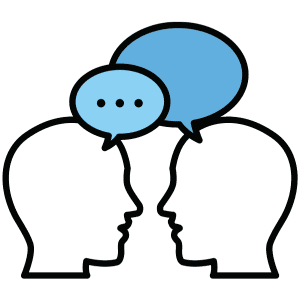In today’s fast-paced world, businesses often operate in a seasonal cycle. Whether you’re in retail, healthcare, hospitality, or any other industry, adapting to seasonal changes is crucial for success. Creating a seasonal schedule can be a game-changer for employers, helping them effectively manage resources, boost productivity, and stay competitive. In this blog post, we will define what seasonal employees are and explore the key steps to creating a seasonal schedule that employers need to know.
What are seasonal employees?

The seasonal timetable of your enterprise largely hinges on the seasonal workers you employ to handle the additional tasks.
The IRS and U.S. Treasury Department do not classify seasonal workers in the same category as regular employees. The IRS and U.S. Treasury Department do not consider seasonal workers as standard employees.
Two factors define seasonal workers. Firstly, their employment duration is less than or equal to six months. Secondly, they are hired for positions that start and end around the same time each year. Their weekly working hours are irrelevant.
Assuming they meet these requirements, they are considered seasonal employees. No matter how many hours they work per week, if these requirements are fulfilled, they are acknowledged as seasonal employees.
How To Create a Seasonal Schedule
Thoroughly Analyze Seasonal Patterns
The foundation of an effective seasonal schedule lies in a deep understanding of your business’s seasonal patterns. To gain this insight, you must meticulously analyze historical data, sales records, and customer trends. Identify when your business experiences peak and off-peak seasons, as well as any emerging patterns or shifts in consumer behaviour. This data will serve as the bedrock of your seasonal scheduling strategy, enabling you to allocate resources with precision.
Cultivate a Flexible Workforce

During busy times, it is important to have a workforce that can easily adjust. Instead of only hiring full-time employees, consider hiring temporary or part-time workers. To attract and retain good seasonal employees, offer competitive pay and benefits. Make sure to clearly communicate the duration of their employment.
Prioritize Cross-Training and Skill Development
Cross-training your employees is a strategic move for maintaining productivity during seasonal shifts. Having a core team proficient in multiple roles within your business allows for rapid adaptation to changes in workload.
Develop an Exhaustive Seasonal Budget
Financial planning is essential for managing seasonal changes effectively. Develop a comprehensive seasonal budget that encompasses additional labor costs, inventory fluctuations, marketing expenses, and any other season-specific financial considerations. Accurate budgeting enables you to make informed decisions about pricing, promotions, and resource allocation.
Implement Advanced Forecasting Tools
Harness the power of technology to enhance your forecasting accuracy. Advanced tools can help you predict seasonal patterns, so you can adjust your schedule and stock levels accordingly. These tools are important for ensuring you have the right amount of resources at the right time, avoiding shortages and excesses.
Champion Clear and Effective Communication

Effective communication is the cornerstone of successful seasonal scheduling. Keep your employees well-informed about upcoming seasonal changes well in advance. Initiate discussions about expectations, shifts, and any alterations to their roles during peak seasons. Clear communication minimizes confusion, fosters employee morale, and ensures everyone is aligned with the plan.
Deploy User-Friendly Scheduling Software
Using scheduling software can greatly improve the process of creating and managing seasonal schedules. These tools let you enter employee availability, skills, and preferences, automatically generating schedules that match your business needs. They also make it easy to make changes in real-time as demand changes.
Strive for Workload Balance
Avoid the pitfall of overworking your core team during peak seasons. While extending their hours might seem like a logical solution, it can lead to employee burnout and reduced productivity. Instead, aim for a balance between regular hours and overtime. Watch out for tired employees and remind them to take breaks for their health and well-being.
Reward and Recognize Exceptional Efforts
Giving rewards to employees during busy periods boosts morale and is important for the company. Consider giving bonuses, gift cards, or extra time off after the busy season ends. Acknowledging your team’s hard work fosters loyalty and commitment, motivating them to perform at their best.
Continuously Review and Adapt
Creating a seasonal schedule is not a one-and-done task; it’s an ongoing process. After each season, conduct a comprehensive evaluation to assess what worked well and what didn’t. Use feedback from employees and customers to improve your seasonal scheduling strategy and make adjustments for the next cycle.
Conclusion
In the ever-shifting landscape of business, mastering the art of seasonal scheduling is a prerequisite for employers looking to thrive. To improve your business during different seasons, understand the patterns, have a flexible workforce, use advanced tools, and communicate well. This will help you use resources better, be more productive, and make customers happier. Also, a good seasonal schedule is not just about surviving changes, but doing well and staying successful in the market.





